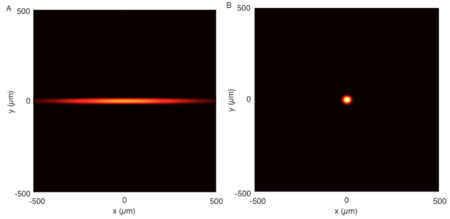
The upgraded ALS will occupy the same facility as the current ALS, replacing the existing electron storage ring and leveraging $500 million in existing ALS infrastructure and experimental systems. The new ring will use powerful, compact magnets arranged in a dense, circular array called a multibend achromat (MBA) lattice. In combination with other improvements to the accelerator complex, the upgraded machine will produce bright, steady beams of high-energy light to probe matter with unprecedented detail.

The improved capabilities of the upgraded ALS will enable transformative science that cannot be performed on any existing or planned light source in the world. This new science includes 3D imaging with nanometer-scale spatial resolution and measurement of spontaneous nanoscale processes with time scales extending from minutes to nanoseconds—all with sensitivity to chemical, electronic, and magnetic properties. Moreover, the beam’s high coherence will enable new classes of optical techniques that will provide the groundbreaking sensitivity and precision needed to detect the faintest traces of elements and subtle electrochemical interactions on the scale of nanometers.
The upgraded ALS is designed to be unsurpassed by any currently envisioned technology and will enable world leading soft x-ray science for years to come. In June 2016, DOE’s Basic Energy Sciences Advisory Committee (BESAC) released the recommendations of the BES Facility Upgrade Prioritization Subcommittee, whose report deemed the ALS-U project “absolutely central” to contribute to world leading science and “ready to initiate construction”—the highest possible ratings in the prioritization process. In September 2016 DOE initiated the ALS-U project by approving its “mission need” and assigning it critical decision (CD)-0 status, the first milestone in making ALS-U a reality. Then, in September 2018, the project received CD-1 approval (alternative selection and cost range), which authorizes the start of engineering and design work. CD-3A approval followed in December 2019, authorizing the release of funds to purchase equipment and formally approving the start of construction on the accumulator ring, an inner ring will feed the upgraded facility’s main light-producing storage ring. The project achieved the CD-2 milestone in April 2021, which approved the ALS-U budget, schedule, and technical scope. Most recently, the project received CD-3 approval, which authorizes the start of construction for the remainder of the project scope.
Read more about science opportunities enabled by the ALS-U project and the approach to building the machine. More detailed reports and other documents are available on the ALS-U resources page.